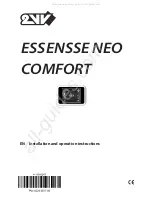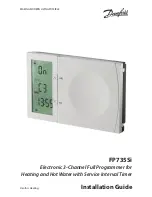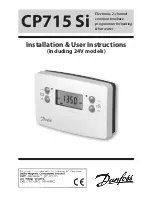
IOM CRUZcontrol®
P/N: 90480009
Revision Date: 03/18/2019
Page
5
of
58
CRUZcontrol Logic Assembly
The CRUZcontrol Logic Assembly consists of a polarized retro-reflective type photoelectric sensor,
pneumatic valve and logic module integrated into one assembly.
The photoelectric sensor will function reliably on conveyor widths up to 34 inches between frames. The
sensor is polarized, and is not affected by shiny surfaces. On NBA
®
23 applications, the reflector is
mounted with a 6 inch offset from the photoelectric sensor, so that the sensor scans across the conveyor
on a slight angle.
The sensor bracket as provided allows for easy adjustment of the sensor. An LED function indicator on
the back of the sensor aids in the adjustment of the sensor. The LED is off if the sensor is not aligned,
flashes if functional but marginally aligned, and is on steady if properly aligned.
The pneumatic valve operates at a range of 0-116 psi, with a flow rate of Cv = 0.100 US Gallons/min.
Observe the operating pressure requirements of the conveyor. For example, NBA™ conveyor should
never be operated at greater than 14 psi.)
There are four different CRUZcontrol Logic Assemblies:
TGW Systems Part No.
CRUZcontrol Logic Assemblies – Description
E0001900A
Basic Logic, XenoROL
®
E0001901A
Basic Logic, NBA 23
E0001904A
Progressive Logic, XenoROL
E0001905A
Progressive Logic, NBA 23
The NBA CRUZcontrol Logic Assembly provides an “air to drive” logic output utilizing a normally closed
pneumatic valve. The XenoROL CRUZcontrol Logic Assembly provides an “air to brake” logic output,
utilizing a normally open pneumatic valve. With both types of logic, the pneumatic valve is energized for
a zone to be running.
Each version of CRUZcontrol also comes as either Basic Logic or Progressive Logic. The following
describes the differences between the two logic alternatives. The descriptions as written more closely
describe product movement on a XenoROL based accumulation conveyor, where accumulated product
is actually brought to a full stop. NBA 23 conveyor, where a stopped zone isn’t usually braked but
becomes gravity flow, will have very different product flow characteristics. The coasting of product
through gravity zones will result in gaps closing up, and could yield higher throughput rates regardless of
the type of logic selected.






































